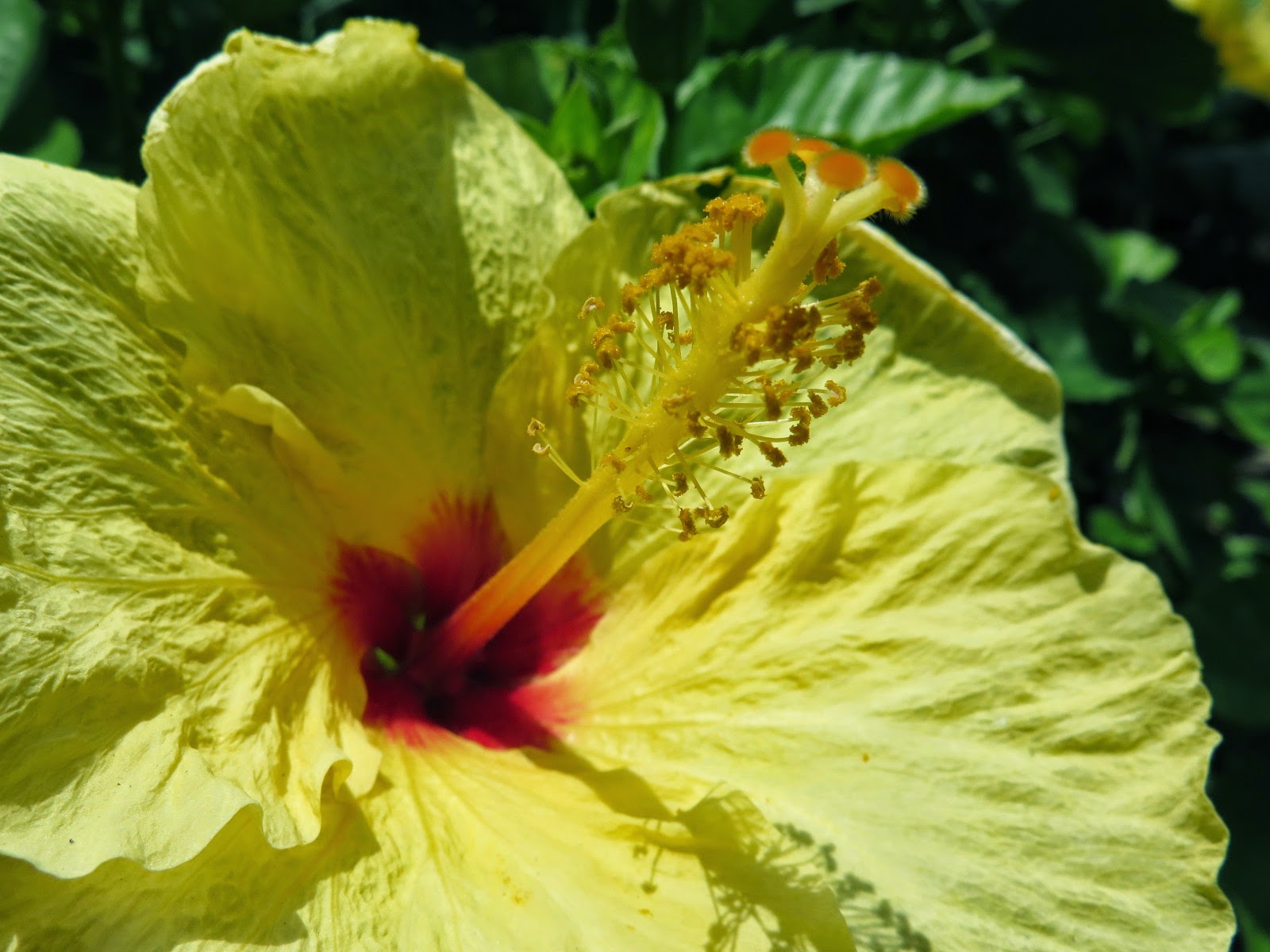As I mentioned last week, I brought a cutting back with me in the hopes of having my own plumeria plant one day soon.
As you can tell from the picture, the cutting is about 12 inches long and if all goes well, will produce pink-yellow flowers. The plumeria flowers range in color from white with yellow centers to various shades of peach-pink with or without yellow centers.
Here are the directions that came with the cutting:
According to the Sunset Western Garden Book, plumerias are very easy to grow from cuttings... in Hawaii. On the mainland, it's safer to buy a plant. But it is still possible. The biggest obstacle is maintaining a delicate balance of sun-water such that the plant is just above dry. In Hawaii, where it rains often and is always warm, this is quite easy! In SoCal, it almost never rains and the air is quite dry. Also, temperatures tend to drop quite a bit at night. Water too much and you end up with a rotten plant. Water too little and it dries out and dies.
Good luck, little guy. I've planted the cutting about 3-4 inches into the ground in regular soil. It was a bit calloused at the end before I did so, which is what is recommended to avoid rot. You can also use rooting hormone if you have it to promote rooting.
A few interesting facts about the lovely plumeria:
- Another common name is Frangipani
- The sap is milky and quite caustic to the skin
- In Polynesian culture, a flower over the right ear means a woman is seeking a relationship. Over the left means she is taken.
- In some parts of Asia, local beliefs state that plumeria trees shelter ghosts and demons, and as a result, plumeria are often planted in cemeteries.
- Blooming begins in the spring and continues for more than 6 months.
I bought my cutting at a fruit stand by the highway and these cutting are available widely, including at general stores on the islands. I think that there's a higher probability for success given our Santa Monica climate. But given their enthusiasm to sell these cuttings to anyone and everyone (at the fruit stand at least), I'm not going to get my hopes too high. We'll see....
Meanwhile, here's a gratuitous shot of the Maui beach that I am missing at the moment.
And I leave you with a clip of some fabulous previous world cup celebrations. I hope to see many more from Holland and USA in the next few weeks still!



























